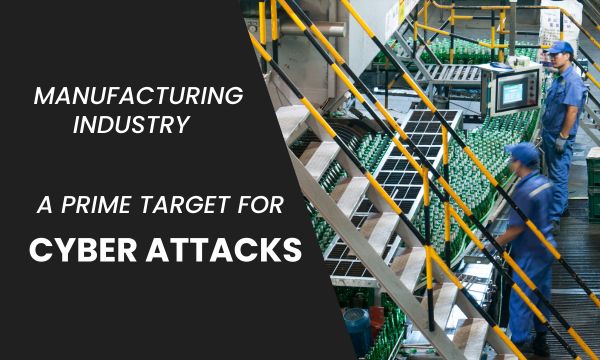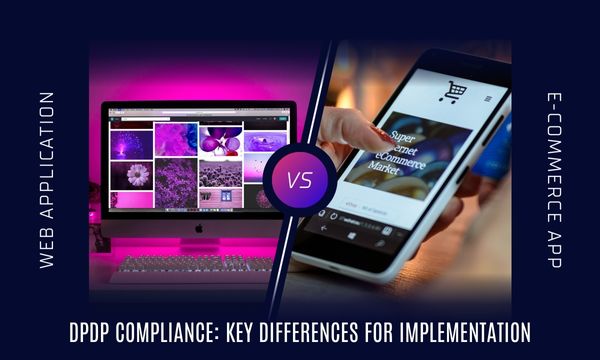
We all know the manufacturing industry is a powerhouse, driving economic growth and innovation. But did you know it's also a prime target for cyber attacks? Yes, cybercriminals are increasingly setting their sights on manufacturers, and for good reasons.
In today’s tech-driven world, the manufacturing industry is the backbone of our global economy. But with great power comes great responsibility—and great risk. The very technology that propels our factories and supply chains forward also opens the door to a host of cyber threats. Cybersecurity isn’t just an IT concern anymore; it’s a crucial part of keeping your business running smoothly and safely. Let’s dive into why cybersecurity is so important for manufacturing and explore some real-life examples that highlight the risks and solutions.
Why the Manufacturing Industry is a Prime Target for Cyberattacks
-
High Value of Intellectual Property (IP): Manufacturers are gold mines of intellectual property—think proprietary designs, unique production processes, and trade secrets. Cybercriminals know this and aim to steal this valuable data for financial gain, competitive advantage, or even industrial espionage.
-
Complex and Interconnected Supply Chains: The manufacturing industry relies on intricate, global supply chains that involve multiple vendors, partners, and systems. This interconnectedness creates numerous entry points for cyber attacks, making it easier for hackers to infiltrate and disrupt operations.
-
Critical Infrastructure Status: Many manufacturing operations are part of critical infrastructure sectors, like automotive, aerospace, and pharmaceuticals. Disrupting these industries can have wide-reaching effects on national economies and public safety, making them attractive targets for state-sponsored attacks and terrorists.
-
Use of Legacy Systems: Manufacturing plants often use legacy systems that lack modern security features. These outdated systems are easier for attackers to exploit, especially when they are not regularly updated or patched.
-
Industrial Control Systems (ICS): ICS are essential for monitoring and controlling manufacturing processes. However, many of these systems were designed without cybersecurity in mind, making them vulnerable to attacks that can halt production and cause significant damage.
-
Financial Impact: The financial consequences of a cyber attack on a manufacturing operation can be devastating. From production downtime and loss of intellectual property to regulatory fines and damage to reputation, the stakes are incredibly high.
-
Sensitive Personal and Business Data: Manufacturers often store large amounts of sensitive personal and business data, including employee information, supplier details, and customer records. This data is valuable on the black market and can be used for identity theft and other malicious activities.
-
Low Cybersecurity Maturity: Compared to other industries, manufacturing has been slower to adopt robust cybersecurity practices. This lag in cybersecurity maturity makes manufacturers easier targets for cybercriminals looking for low-hanging fruit.
Eight Major Vulnerabilities in Manufacturing
1. Ransomware Attacks
Ransomware attacks involve malicious software that encrypts a victim’s data, rendering it inaccessible until a ransom is paid. For manufacturers, this can halt production lines and cause significant financial losses.
Real-Life Example: Renault-Nissan Cyber Attack
In May 2017, Renault-Nissan was hit by the WannaCry ransomware attack, forcing the company to halt production at several sites. The attack exploited vulnerabilities in outdated Windows systems, demonstrating ransomware's severe impact on manufacturing operations.
2. Intellectual Property (IP) Theft
IP theft involves the unauthorized access and exfiltration of proprietary information. In the competitive manufacturing sector, the theft of IP can lead to significant financial losses and damage to competitive advantage.
Real-Life Example: Keytronic
In 2024, Keytronic, a manufacturer of electronic products, experienced a cyber attack that resulted in the theft of sensitive data, including IP. The breach affected the company’s operations and highlighted the vulnerability of manufacturers to IP theft.
3. Supply Chain Attacks
Supply chain attacks target vulnerabilities within the interconnected web of suppliers and partners. Compromising a single supplier can have a cascading effect, disrupting the entire supply chain.
Real-Life Example: Belgian Beer Firm Duvel
In early 2024, Belgian beer manufacturer Duvel was the victim of a cyber attack that disrupted its supply chain and production processes. The attackers exploited vulnerabilities in Duvel’s supplier network, demonstrating how a single weak link can compromise an entire operation.
4. Industrial Control Systems (ICS) Vulnerabilities
ICS are crucial for monitoring and controlling manufacturing processes. However, many ICS are outdated and lack modern security features, making them vulnerable to cyber attacks.
Real-Life Example: The Stuxnet Worm
Although not a manufacturing-specific attack, the Stuxnet worm that targeted Iranian nuclear facilities serves as a stark reminder of the potential impact of ICS vulnerabilities. The worm exploited multiple zero-day vulnerabilities to sabotage centrifuges, causing significant damage and highlighting the need for securing ICS in manufacturing environments.
5. Phishing and Social Engineering
Phishing and social engineering attacks trick employees into revealing sensitive information or granting unauthorized access. These attacks are often the first step in a larger breach.
Scenario: Targeting Employees
Imagine an employee receiving a seemingly legitimate email from a supplier requesting urgent action. The employee clicks on a malicious link, unknowingly giving the attacker access to the network. This attack can lead to data breaches, financial loss, and operational disruption.
6. Insider Threats
Insider threats come from employees or contractors who intentionally or unintentionally compromise security. These threats can be difficult to detect and prevent.
Scenario: Disgruntled Employee
A disgruntled employee with access to sensitive systems might sabotage production processes or steal IP before leaving the company. Even unintentional actions, like sharing passwords or falling for phishing scams, can cause significant damage.
7. Internet of Things (IoT) and Industrial Internet of Things (IIoT) Vulnerabilities
The proliferation of IoT and IIoT devices in manufacturing has expanded the attack surface. These devices often lack strong security measures, making them easy targets for attackers.
Scenario: Insecure IoT Devices
Consider a manufacturer using IoT sensors to monitor equipment. If these sensors are not properly secured, attackers can exploit them to gain access to the network, disrupt operations, or steal data.
8. Inadequate Patch Management
Delays in applying security patches leave systems vulnerable to known exploits. This is especially critical in manufacturing, where downtime for patching can be costly.
Scenario: Unpatched Systems
A manufacturer using outdated software fails to apply a critical security patch, leaving the system vulnerable to a known exploit. Attackers take advantage of this vulnerability, leading to a breach that could have been prevented with timely patching.
The manufacturing industry’s reliance on interconnected systems and digital technologies makes it a prime target for cyber attacks. High-profile incidents like the Renault-Nissan cyber attack, Keytronic data breach, and Duvel supply chain attack underscore the urgent need for robust cybersecurity measures.
Understanding why manufacturing is a prime target and recognizing the major cybersecurity concerns is just the first step. The real challenge lies in taking proactive measures to find and patch vulnerabilities before they can be exploited. Manufacturers must prioritize regular security audits and risk assessments to stay ahead of potential threats. Implementing a comprehensive patch management strategy is crucial; delaying security updates can leave systems vulnerable to known exploits.
Effective risk management goes beyond just technology. It involves creating a culture of cybersecurity awareness among employees, ensuring they understand the risks and know how to respond to potential threats. Investing in training and awareness programs can significantly reduce the likelihood of successful phishing attacks and social engineering attempts.
Manufacturers must also focus on securing their supply chains. This involves vetting suppliers, enforcing contractual security requirements, and continuously monitoring for vulnerabilities. A proactive approach to supply chain security can prevent attackers from exploiting weak links to compromise the entire operation.
By addressing these vulnerabilities and adopting comprehensive cybersecurity practices, manufacturers can safeguard their valuable assets, maintain competitive advantage, and ensure business continuity in an increasingly digital world. The stakes are high, and the time to act is now. Stay vigilant, secure your systems, and keep those production lines running smoothly!



